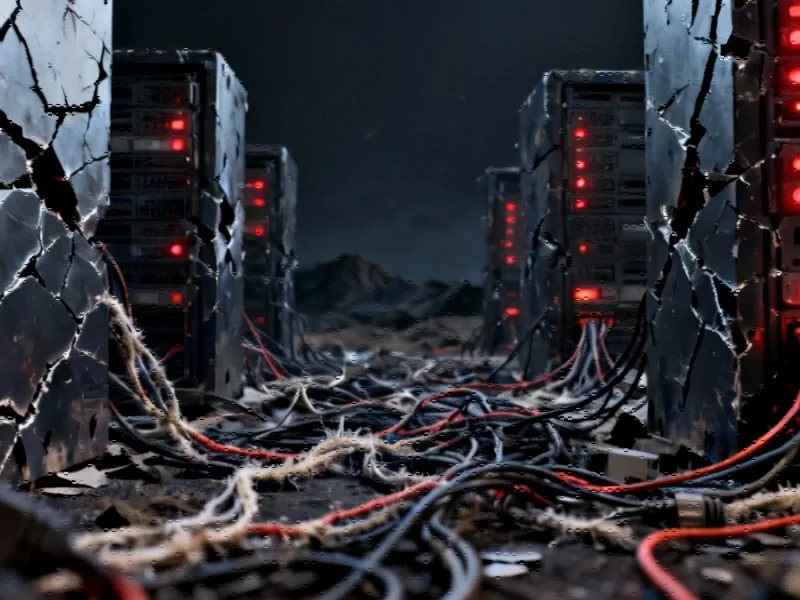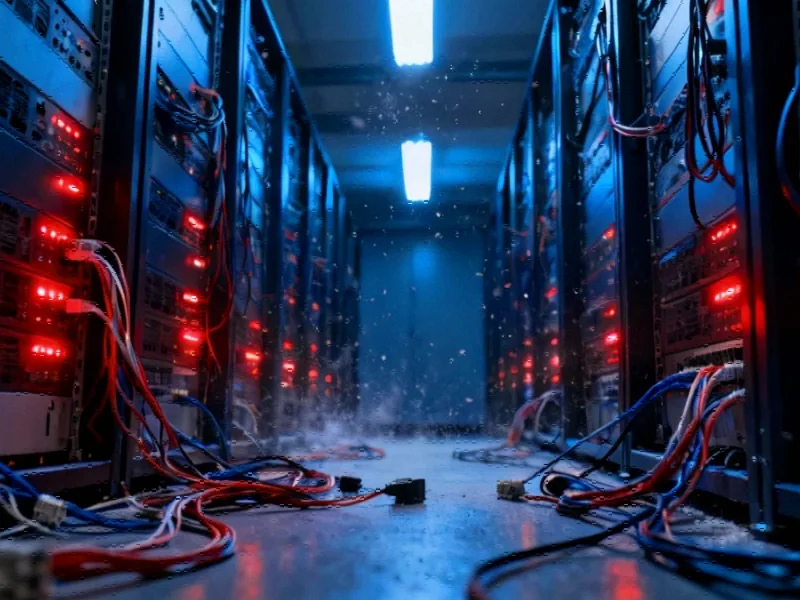The Fragile Backbone of Modern Industry
Yesterday’s massive AWS outage didn’t just disrupt social media and entertainment platforms—it revealed fundamental weaknesses in the industrial computing infrastructure that powers global manufacturing, automation, and control systems. When Amazon’s US-EAST-1 region experienced cascading failures, the ripple effects demonstrated how dependent industrial operations have become on centralized cloud services.
Beyond Consumer Disruption: Industrial Impact
While media coverage focused on popular apps and services going dark, the outage had significant consequences for industrial operations. Manufacturing facilities relying on AWS for real-time monitoring saw their dashboards go blank. Automated production lines dependent on cloud-based control systems faced unexpected interruptions. Supply chain management platforms used by major industrial corporations became inaccessible, creating bottlenecks that will take days to fully resolve.
The concentration of critical infrastructure in single-provider cloud ecosystems creates systemic risk that extends far beyond consumer inconvenience. As one industry expert noted during the crisis, “When the cloud sneezes, manufacturing catches pneumonia.”
The Data Center Alley Bottleneck
Northern Virginia’s “data center alley” represents both the pinnacle of cloud infrastructure achievement and its greatest vulnerability. The region hosts over 50 major data center campuses, creating an unprecedented concentration of computing power. Yesterday’s incident revealed how interdependencies between services can turn a localized technical issue into a global catastrophe.
Industrial operations that have migrated to cloud-based control systems discovered the hard way that geographic redundancy means little when the failure occurs at the architectural level of their cloud provider.
Financial Markets and Industrial Computing
The outage’s timing created additional complications for industrial firms managing financial operations. Companies attempting to execute time-sensitive transactions through platforms affected by the disruption found themselves unable to respond to changing market conditions, highlighting the interconnected nature of industrial and financial systems.
Alternative Architectures and Future Resilience
Industry leaders are now reevaluating their cloud strategies in light of yesterday’s events. The conversation has shifted from pure cost optimization to resilience planning. Some organizations are exploring hybrid approaches that maintain critical control systems on-premises while using cloud services for less time-sensitive operations.
The development of more robust software architectures that can withstand cloud provider outages is becoming a priority for industrial computing teams. Meanwhile, advances in manufacturing technology continue to drive increased connectivity, creating both opportunities and vulnerabilities.
The Concentration of Power
With AWS and Microsoft Azure controlling the majority of the cloud infrastructure market, industrial organizations face limited choices for mission-critical applications. This market concentration creates strategic vulnerabilities that extend beyond technical concerns. As one operations director commented, “We’re essentially betting our manufacturing capacity on the reliability of two companies.”
The rapid adoption of AI technologies in industrial settings adds another layer of dependency on cloud infrastructure, as most advanced AI systems require substantial computing resources typically accessed through cloud providers.
Moving Forward: Lessons for Industrial Computing
The AWS outage serves as a crucial wake-up call for the industrial sector. Key takeaways include:
- Architectural resilience must become a primary design consideration, not an afterthought
- Multi-cloud strategies warrant serious evaluation for critical operations
- Edge computing solutions can provide redundancy for time-sensitive control systems
- Disaster recovery planning must account for cloud provider outages
As industrial organizations process the implications of yesterday’s widespread disruption, the conversation is shifting from whether to use cloud services to how to use them responsibly. The balance between efficiency and resilience has never been more critical for industrial computing professionals navigating these complex industry developments.
What remains clear is that the industrial sector’s digital transformation cannot proceed without addressing the fundamental vulnerabilities exposed by this incident. The path forward requires careful consideration of both technological capabilities and strategic risk management in an increasingly connected industrial landscape.
This article aggregates information from publicly available sources. All trademarks and copyrights belong to their respective owners.
Note: Featured image is for illustrative purposes only and does not represent any specific product, service, or entity mentioned in this article.



